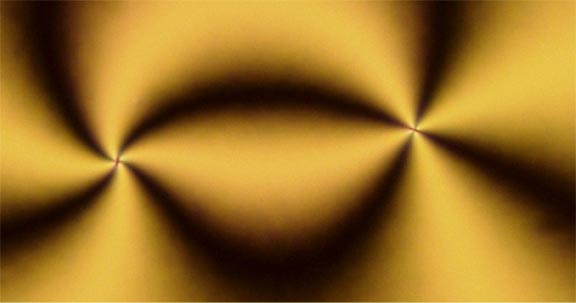Umbilic Defects
This project reflects work with liquid crystals. The centers of the four-fold swirls represent "umbilic defects" in a nematic liquid crystal. These are thermodynamically distinct phases formed by rod-like molecules which on average spontaneously align in a parallel fashion. They are thus anisotropic fluids.
An umbilic defect results when an electric field is applied to a nematic liquid crystal with negative dielectric anisotropy under certain boundary conditions. The umbilic defects pictured below have an equal topological strength, but opposite sign. They attract each other and eventually annihilate to result in a defect-free state.
Unlike defects that arise in temperature or pressure quench experiments, which show a mixture of various defect strengths, field-induced umbilic defects give a very "clean" system of defects of exclusively the same strength.
The study of the annihilation dynamics of topological defects in liquid crystals may have implications for the understanding of cosmological theories, where similar topological defects are observed. Thus, such studies have also been referred to as "cosmology in the lab."

Image credit: Ingo Dierking/University of Manchester, UK
Ingo Dierking, an APS member, is at the School of Physics and Astronomy, University of Manchester, United Kingdom.


